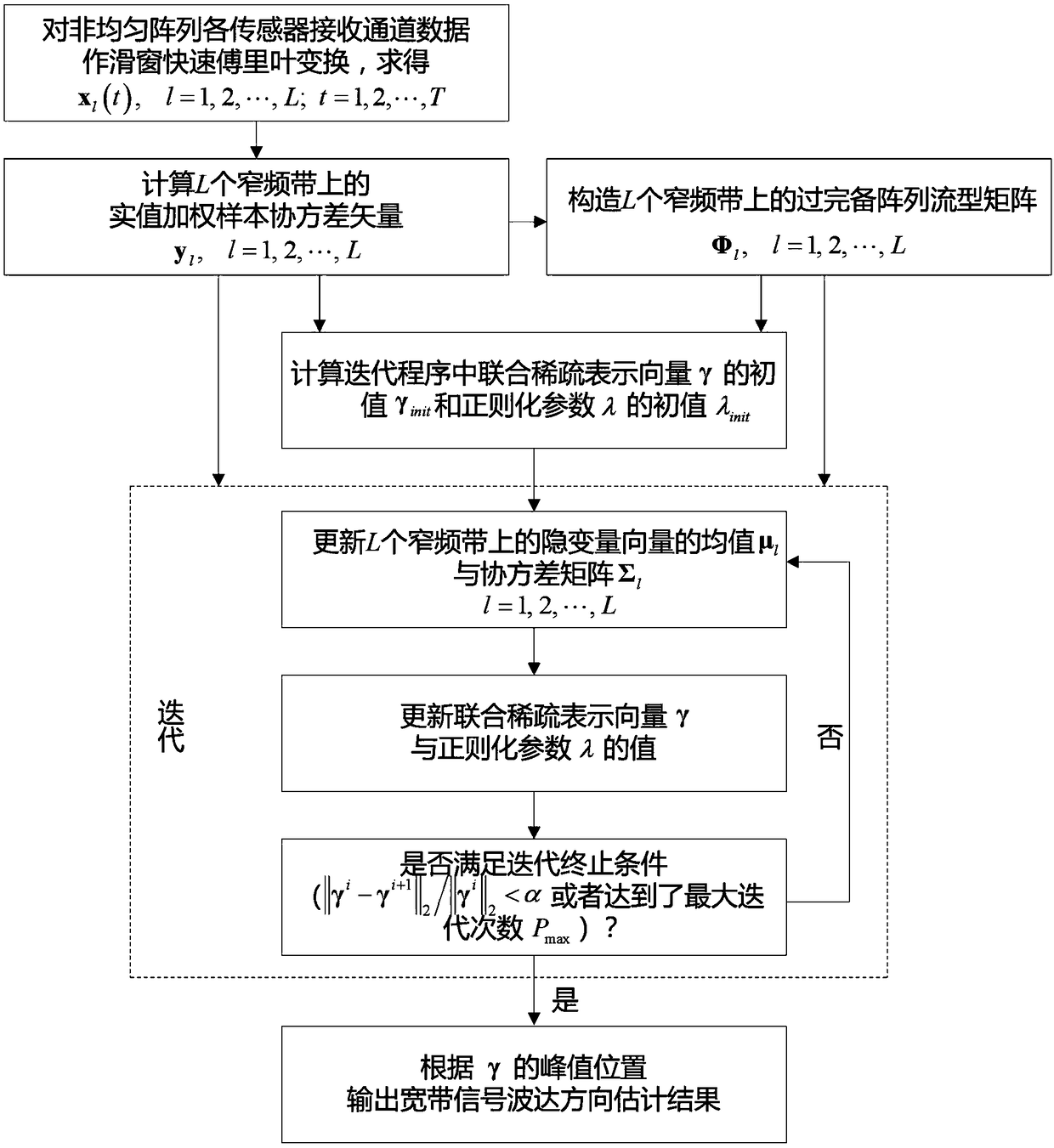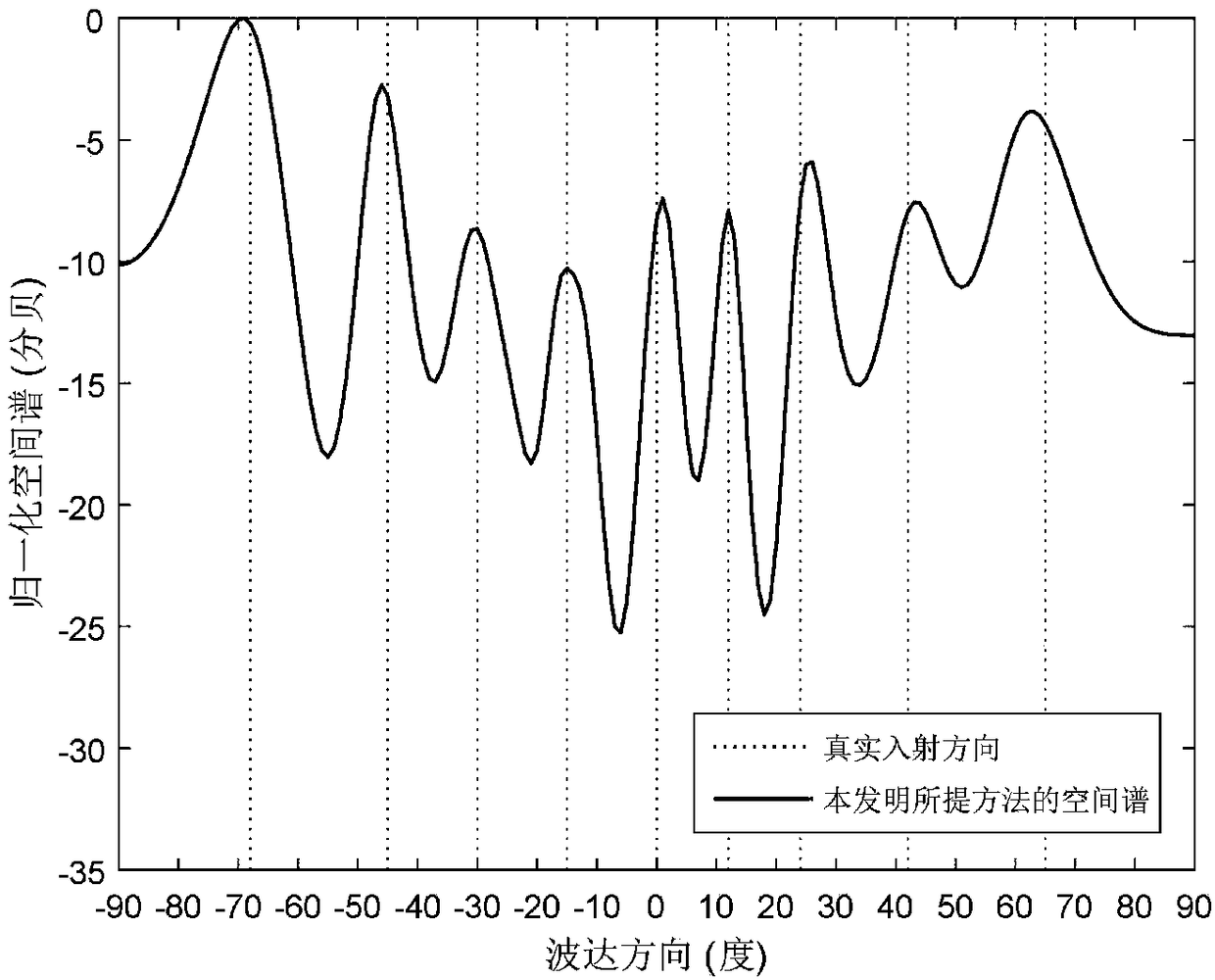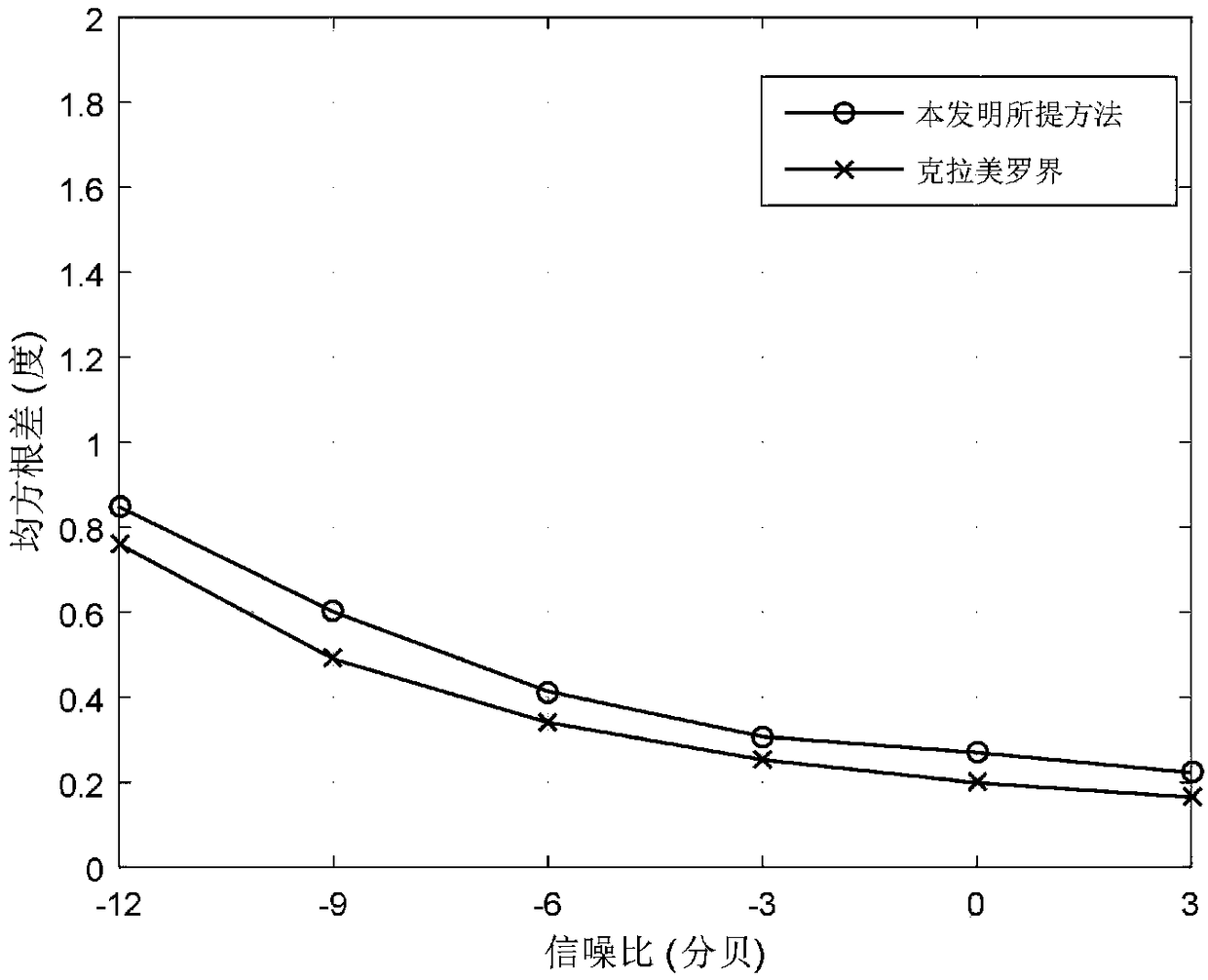Inhomogeneous sensor array broadband signal direction-of-arrival estimation method
A direction of arrival estimation, sensor array technology, used in direction-determining directors, systems for determining direction or offset, direction finders using ultrasonic/sonic/infrasonic waves, etc., can solve problems such as performance impact
- Summary
- Abstract
- Description
- Claims
- Application Information
AI Technical Summary
Problems solved by technology
Method used
Image
Examples
Embodiment
[0058] A non-uniform sensor array broadband signal direction of arrival estimation method, refer to figure 1 , the simulation produces a center frequency of 100Hz, a bandwidth of 40Hz broadband acoustic signal source (the propagation speed of the acoustic signal is 340m / s). A two-level nested acoustic sensor array is used as an example of a non-uniform array, including 6 sensors located at [0, d, 2d, 3d, 7d, 11d], where d=1.7m. A total of 9 uncorrelated broadband signal sources covering the same frequency range are generated, from the far field -69°, -45°, -30°, -15°, 0°, 12°, 24°, 42°, 65° These 9 different directions are incident on the non-uniform array, and Gaussian white noise which is not related to the signal is superimposed when each sensor receives the signal, and finally the array outputs data with a sampling rate of 240Hz.
[0059] Sliding window FFT is done to each sensor channel output data sample sequence to obtain the array output snapshot vector sequence on L=...
PUM
 Login to View More
Login to View More Abstract
Description
Claims
Application Information
 Login to View More
Login to View More - R&D
- Intellectual Property
- Life Sciences
- Materials
- Tech Scout
- Unparalleled Data Quality
- Higher Quality Content
- 60% Fewer Hallucinations
Browse by: Latest US Patents, China's latest patents, Technical Efficacy Thesaurus, Application Domain, Technology Topic, Popular Technical Reports.
© 2025 PatSnap. All rights reserved.Legal|Privacy policy|Modern Slavery Act Transparency Statement|Sitemap|About US| Contact US: help@patsnap.com



